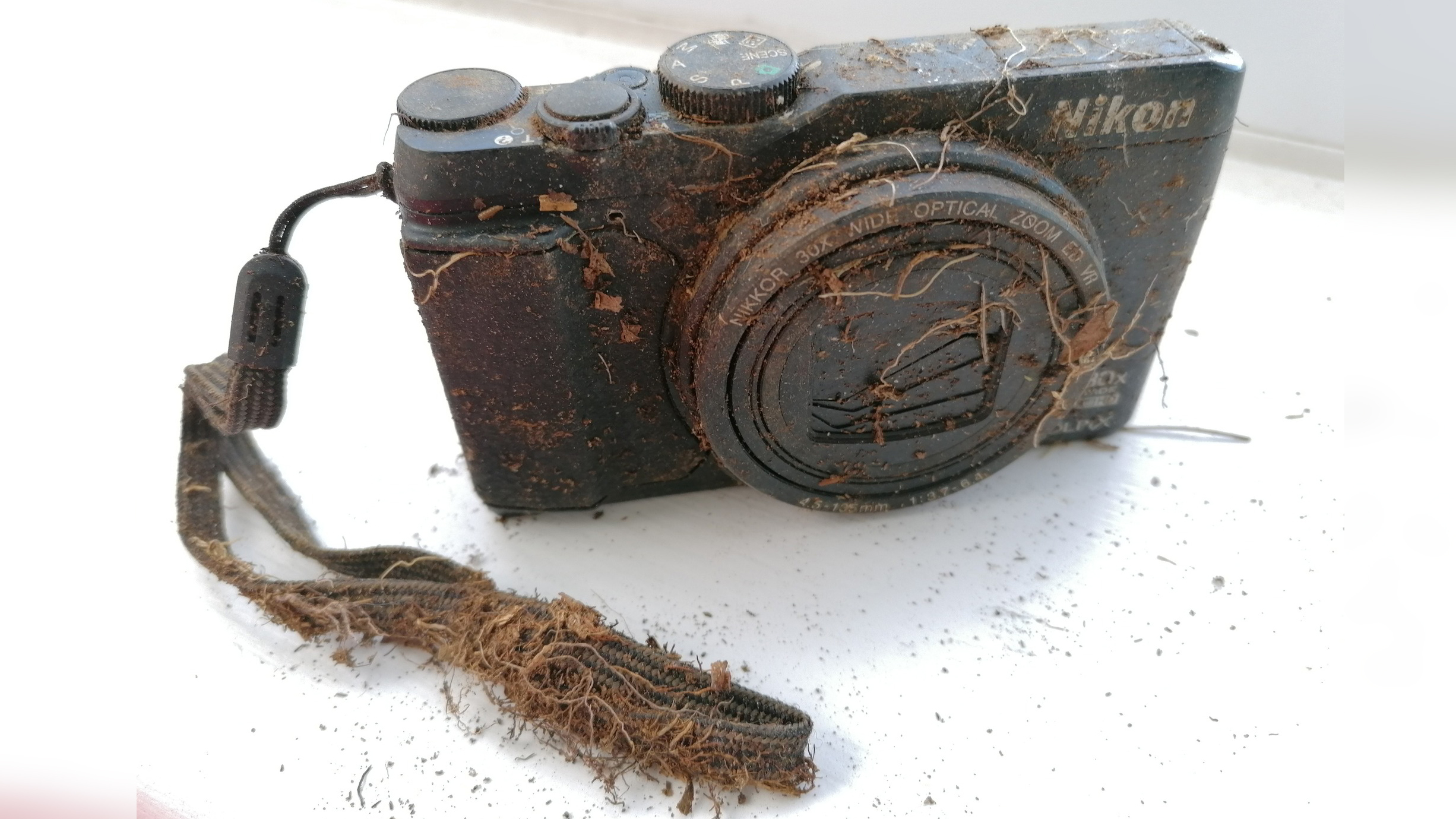The best spotting scopes in 2025: get a closer look at sports, nature, and wildlife
The best spotting scopes offer higher magnification than a monocular but much more portability than a telescope
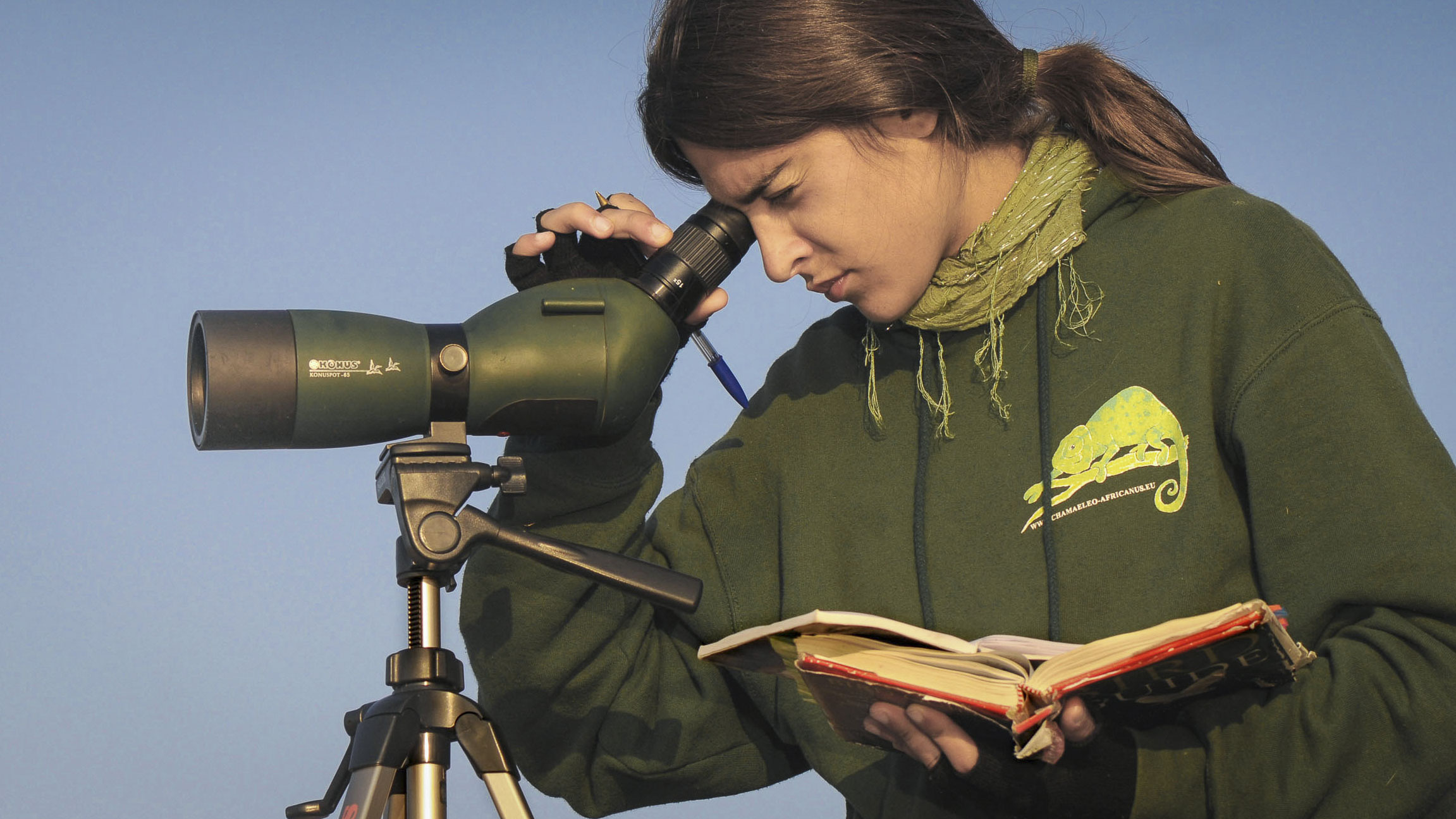
Through years of using spotting scopes across various terrains and for countless wildlife observations, I’ve come to see them as indispensable for nature enthusiasts, sports fans, and even stargazers. Often called field scopes or digiscopes, they bridge the gap between monoculars and telescopes, offering impressive magnification while remaining compact and portable.
One of the biggest advantages of a spotting scope over a monocular is its magnification power. While monoculars typically max out around 10x—and can become quite bulky at that level—spotting scopes provide significantly higher magnification without sacrificing portability. Many models also feature zoom capabilities, allowing for adjustable magnification, which I’ve found incredibly useful when observing distant wildlife.
Spotting scopes also shine in photography through digiscoping, where a camera is attached to the scope. Whether viewing with the naked eye or capturing images, the added magnification makes a sturdy tripod essential for a steady, clear view—an investment well worth making.
With options ranging from budget-friendly models to high-end optics like the Zeiss Conquest Gavia 85, spotting scopes cater to all price points. For those seeking top-tier performance, I highly recommend the Leica APO-Televid 82—an optical marvel that’s hard to beat for serious enthusiasts.
Whether you’re new to spotting scopes or looking to upgrade, this guide covers options for every budget and use case.
Best spotting scopes: our top picks
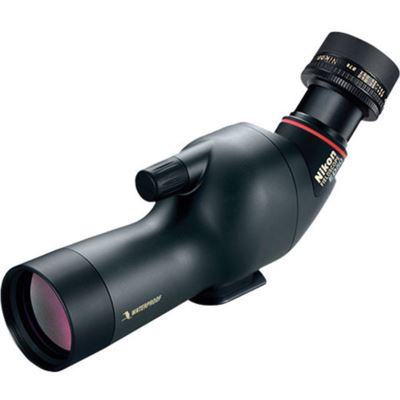
It’s no surprise that camera and optical manufacturer Nikon produces scopes with the ability to attach a camera and enjoy the art of digiscoping. Unlike with some other scopes, the eyepiece is sold separately.
Read more below
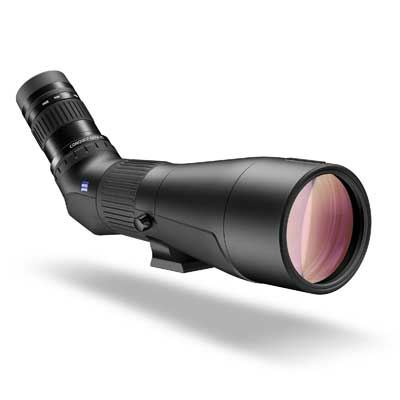
Any photographer will recognize the name Zeiss as being the bee’s knees for optical quality, so selecting a Zeiss scope for wildlife and nature photography has got to be a sensible decision.
Read more below

This is a great mid-priced model for wildlife watchers. It comes kitted up with its own travel tripod, and a mount for using the scope from your car.
Read more below
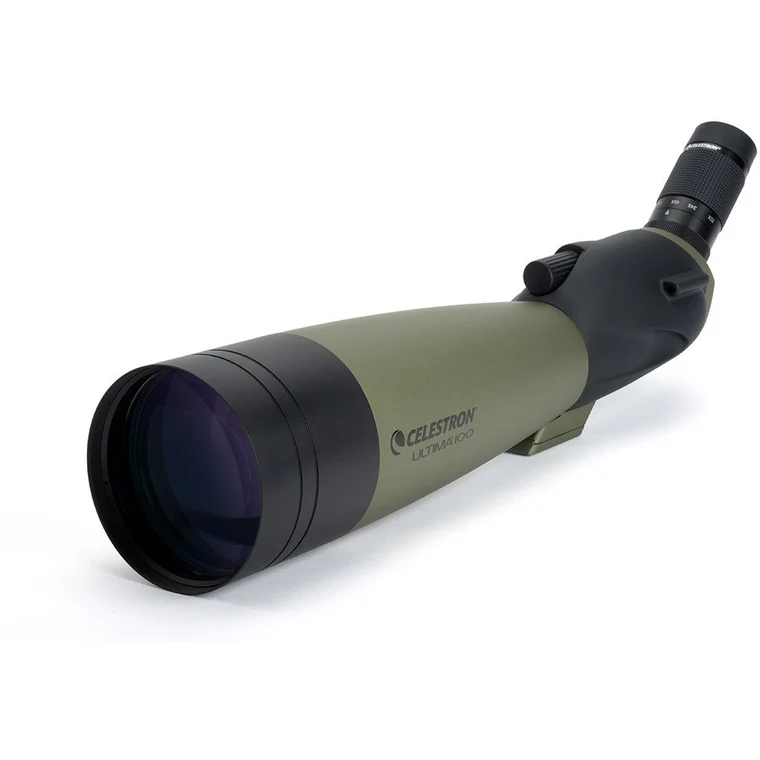
The Ultima 100 is a powerful 100mm scope, ideal for stargazing and wildlife viewing, with bright optics, a 45° viewing angle, and a 22-66x zoom eyepiece.
Read more below
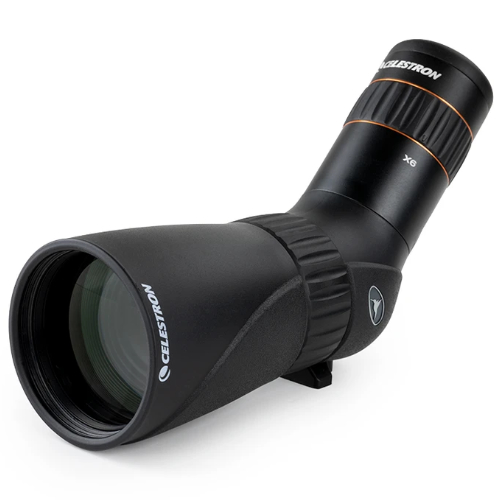
The Celestron Hummingbird 9-27x56 ED spotting scope is compact, lightweight (590g), and travel-friendly. Its 9x magnification works as a monocular, and it’s waterproof, nitrogen-filled, and adaptable to mounts.
Read more below
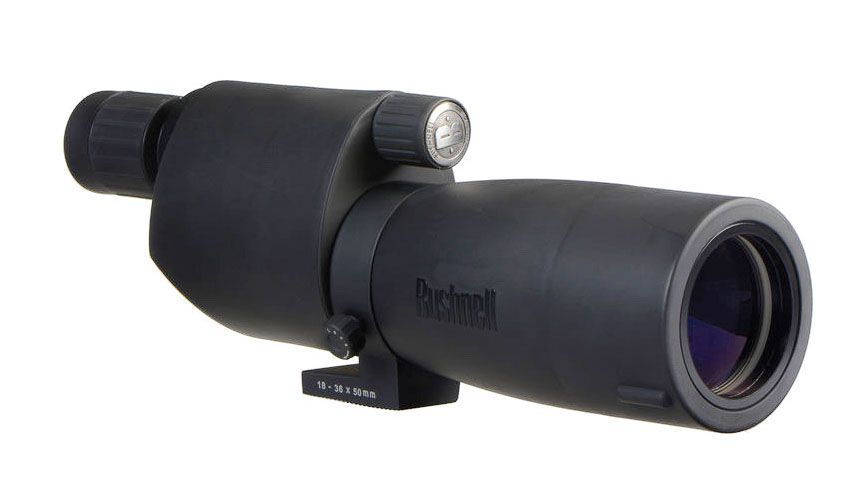
The Bushnell Sentry 18-36x50 spotting scope is budget-friendly, waterproof, and features O-ring sealed optics. Its multi-coated lenses provide bright, high-contrast images, with twist-up eyecups and 16mm eye relief. Weighing 877g, it’s a portable, moisture-sealed option.
Read more below
The best spotting scopes in 2025
Why you can trust Digital Camera World
Best all-round spotting scope
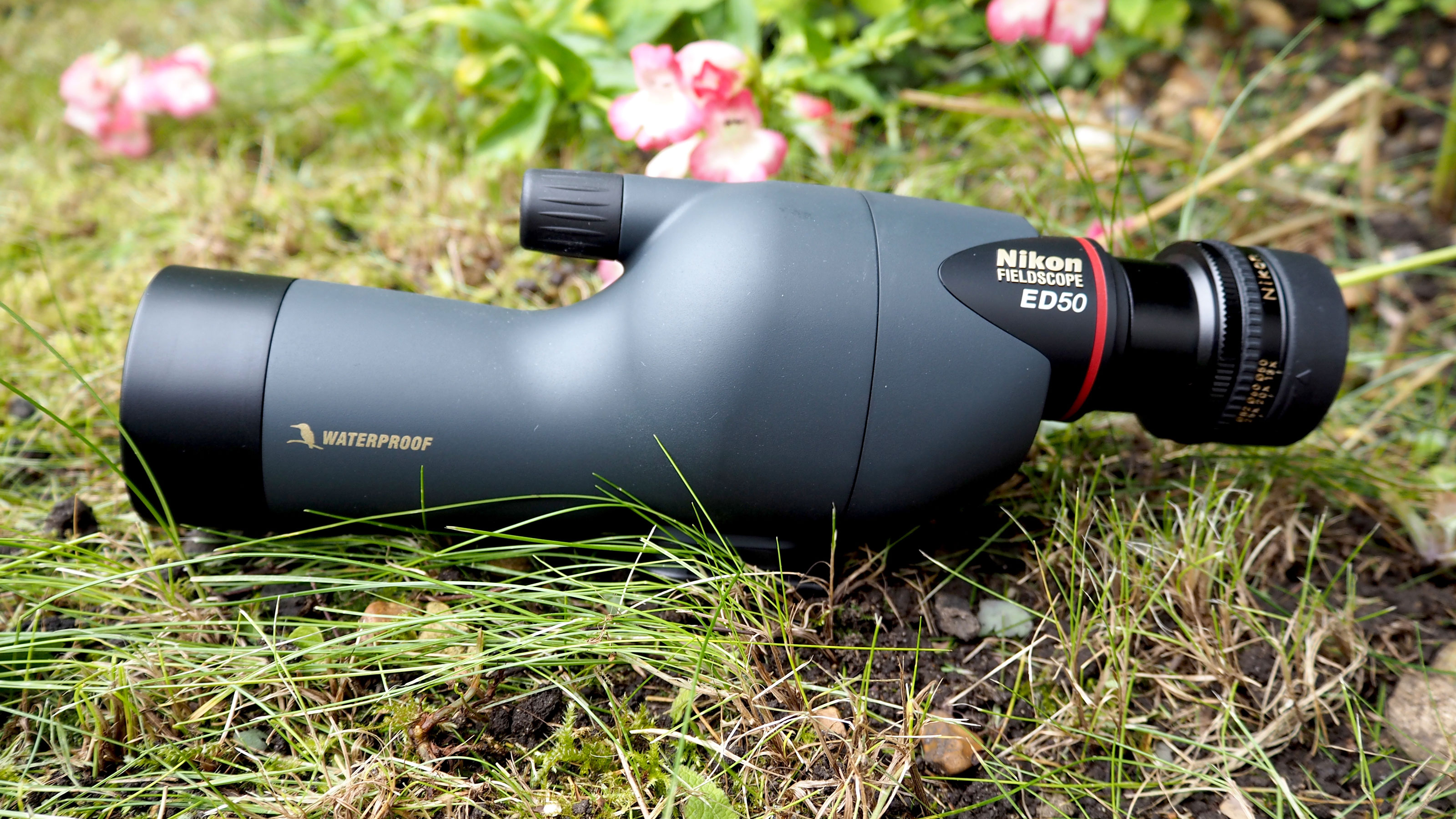
Specifications
Reasons to buy
Reasons to avoid
✅ You want a reputable brand: Nikon’s expertise in optics means the Fieldscope ED50 offers reliable performance from a trusted manufacturer known for high-quality lenses and scope systems.
✅ You want a digiscoping option: Nikon's scope allows for camera attachment, making it easy to capture photos directly through the scope and expanding its versatility for both observation and photography.
❌ You want a larger objective lens: While the 50mm lens is sufficient in good lighting, a larger lens might provide better performance in low-light situations, making it ideal for users frequently in dawn, dusk, or shaded areas.
❌You want enhanced waterproofing: Although the ED50 is waterproof up to a meter for five minutes, users who need extended water exposure might require a model with more substantial waterproof capabilities.
It’s no surprise that camera and optical manufacturer Nikon produces scopes with the ability to attach a camera and enjoy the art of digiscoping. Indeed, Nikon has its own digiscoping system.
There’s a lot of choice in this field, but the Nikon Fieldscope ED50 offers a 50mm objective lens (to which a 55mm filter can be attached if desired) and is both relatively compact and lightweight with it.
It also ticks the boxes for the regular must-haves, such as a fog-banishing nitrogen-filled construction and built-in waterproofing (it can even be submerged up to a meter for five minutes) for all those times when the weather doesn't play ball, along with a multilayered lens coating to ensure superb light transmission and, ultimately, high-resolution images.
Read our full Nikon Fieldscope ED50 review for more details
Best spotting scope for image quality
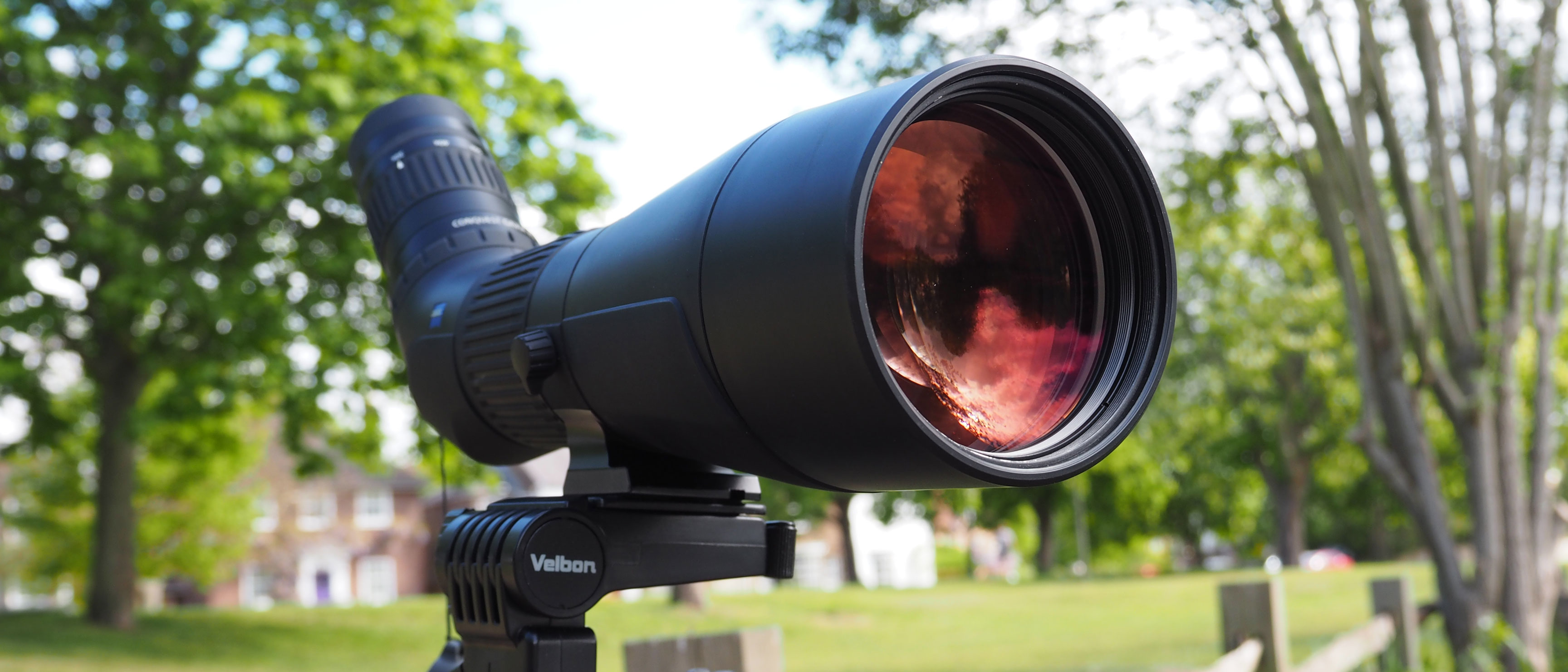
Specifications
Reasons to buy
Reasons to avoid
✅ You want powerful magnification: The zoom range of up to 60x allows you to view distant subjects with great detail, expanding your scope’s range and making it highly versatile.
✅ You want high optical quality: Zeiss is known for its exceptional optics, making the Conquest Gavia 85 a top choice for wildlife and nature photographers seeking clarity and precision in their images.
❌ You want a more affordable option: Zeiss scopes, including the Conquest Gavia 85, are premium products with a price tag to match, which might not be suitable for budget-conscious photographers.
❌ You want a more compact scope: The large 85mm lens and durable build make this scope relatively bulky, which might be a drawback if portability is a high priority for your outdoor activities.
Any photographer will recognize the name Zeiss as being the bee’s knees for optical quality, so selecting a Zeiss scope for wildlife and nature photography has got to be a sensible decision.
Of course, Zeiss doesn’t come cheap, but the Zeiss Conquest Gavia 85 is versatile due to a rapid focus mechanism and a close near-focus setting, so even observing smaller objects or wildlife is claimed to be easier than ever.
Of course, you only have to look at the name of the product to see one great advantage – namely a whopping 85mm-diameter objective lens, useful for low-light observation. Couple this with a zoom-magnification range of up to 60x and a fog-proof, nitrogen-filled construction, and you’ve really got something.
Read our full Zeiss Conquest Gavia 85 review for more details
Best spotting scope for beginners
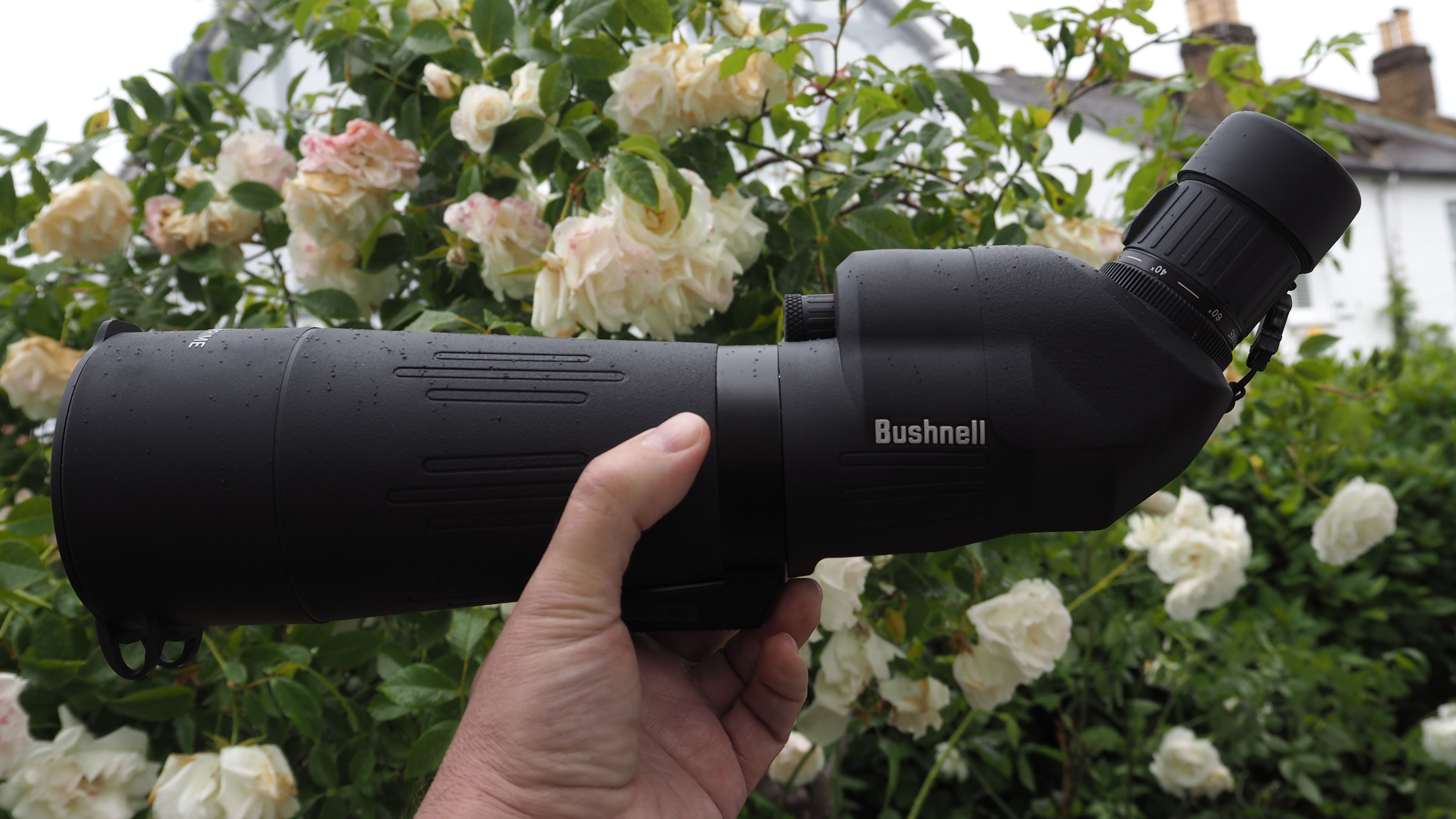
Specifications
Reasons to buy
Reasons to avoid
✅ You want a mid-priced option: The Bushnell 20-60x65 Prime offers quality features at a mid-range price, making it a great choice for wildlife enthusiasts seeking good performance without the high price tag.
✅ You want reliable weatherproofing: The IPX7 waterproof rating and O-ring sealed optics provide solid protection, keeping the scope dry and usable in various weather conditions.
❌ You want higher-end durability features: Although this model offers good weatherproofing, those who need more rugged, shockproof construction for extreme outdoor use might look for a higher-end option.
❌ You want improved low-light performance: While the 65mm aperture works well in daylight, a larger objective lens might be preferred if you plan on using the scope frequently at dawn, dusk, or in low-light environments.
This is a great mid-priced model for wildlife watchers. It comes kitted up with its own travel tripod, and a mount for using the scope from your car. The 20-60x range gives it versatility for use with different animal and bird species, with a decent 65mm aperture that is more than satisfactory for daylight viewing.
This spotting scope offers IPX7-level waterproof construction with O-ring sealed optics, ensuring everything stays reassuringly dry in all weather conditions.
Read our full Bushnell 20-60x65 Prime review for more details
Best spotting scope for astronomy
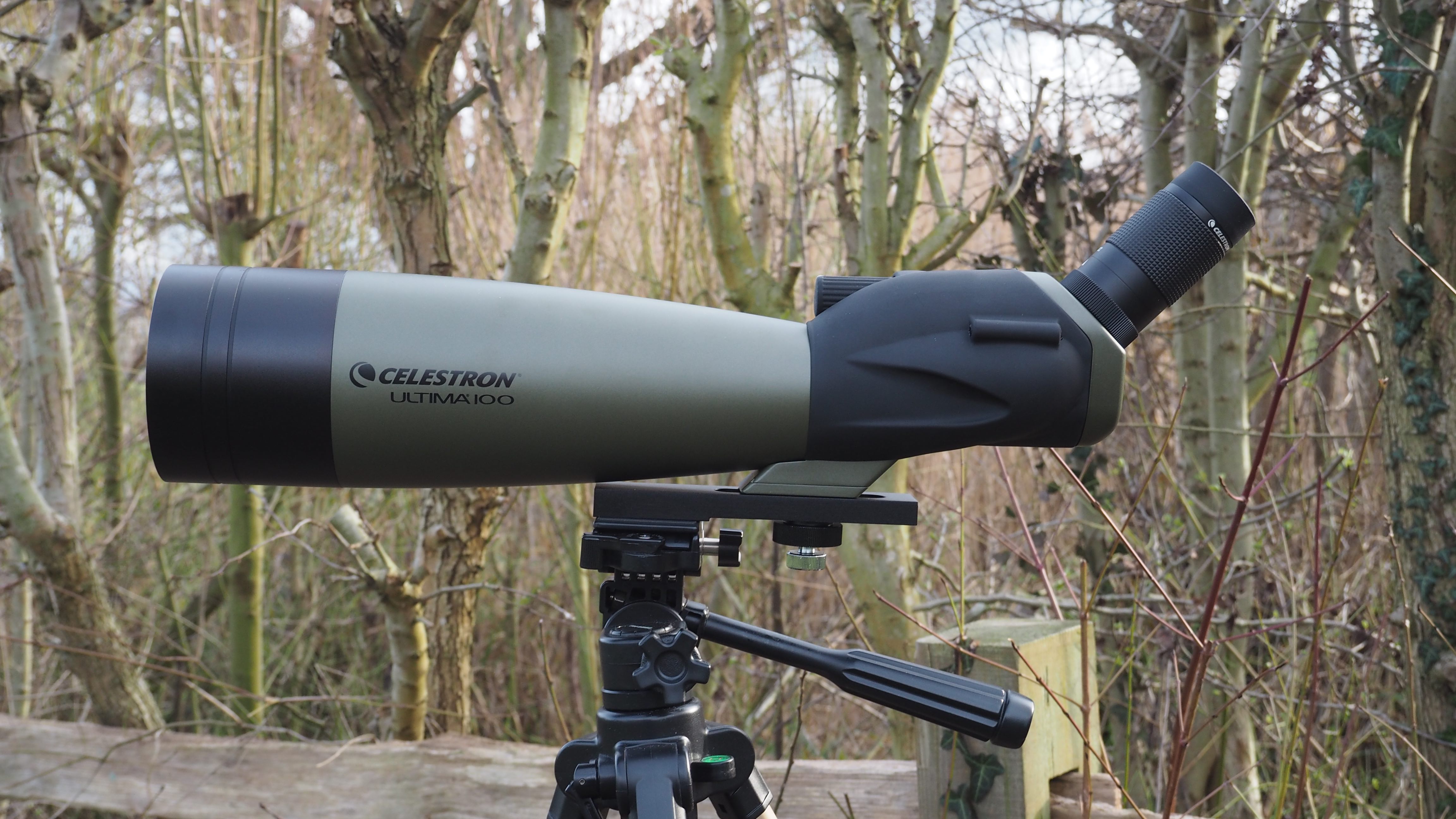
Specifications
Reasons to buy
Reasons to avoid
✅ You want powerful magnification: The 22-66x zoom eyepiece offers a versatile range, allowing for clear and detailed observation of wildlife or celestial objects from a distance.
✅ You want a large aperture for low-light use: The 100mm diameter lens on the Celestron Ultima 100 provides over 50% brighter images than smaller models, making it ideal for low-light viewing during dusk or dawn and even stargazing.
❌ You want easy portability: While durable, the size and weight make it less ideal for users who prioritize portability and ease of packing for frequent travel or extended hikes.
❌ You want a lighter scope for active use: At 2kg, this scope is one of the bulkiest in its class, which could be cumbersome for activities requiring mobility, like action photography or hiking.
Weighing 2kg and sporting a 100mm diameter, this is one of the biggest and bulkiest scopes on our list, so it wouldn't be great for, say, action photography. But for more stationary pursuits like stargazing and watching wildlife from a distance, it's a great option.
The largest aperture scope in the Ultima line, the 100mm Ultima offers more than 50 percent brighter images than the 80mm version, so it's a better option for low-light shooting.
The 100mm refractor features a 45° viewing angle and offers excellent multi-coated optics packed into a portable and durable refractor design and comes standard with an angled, 22-66x zoom eyepiece. A soft carrying case is also included.
Read our full Celestron Ultima 100 review.
Best spotting scope for hiking & travel
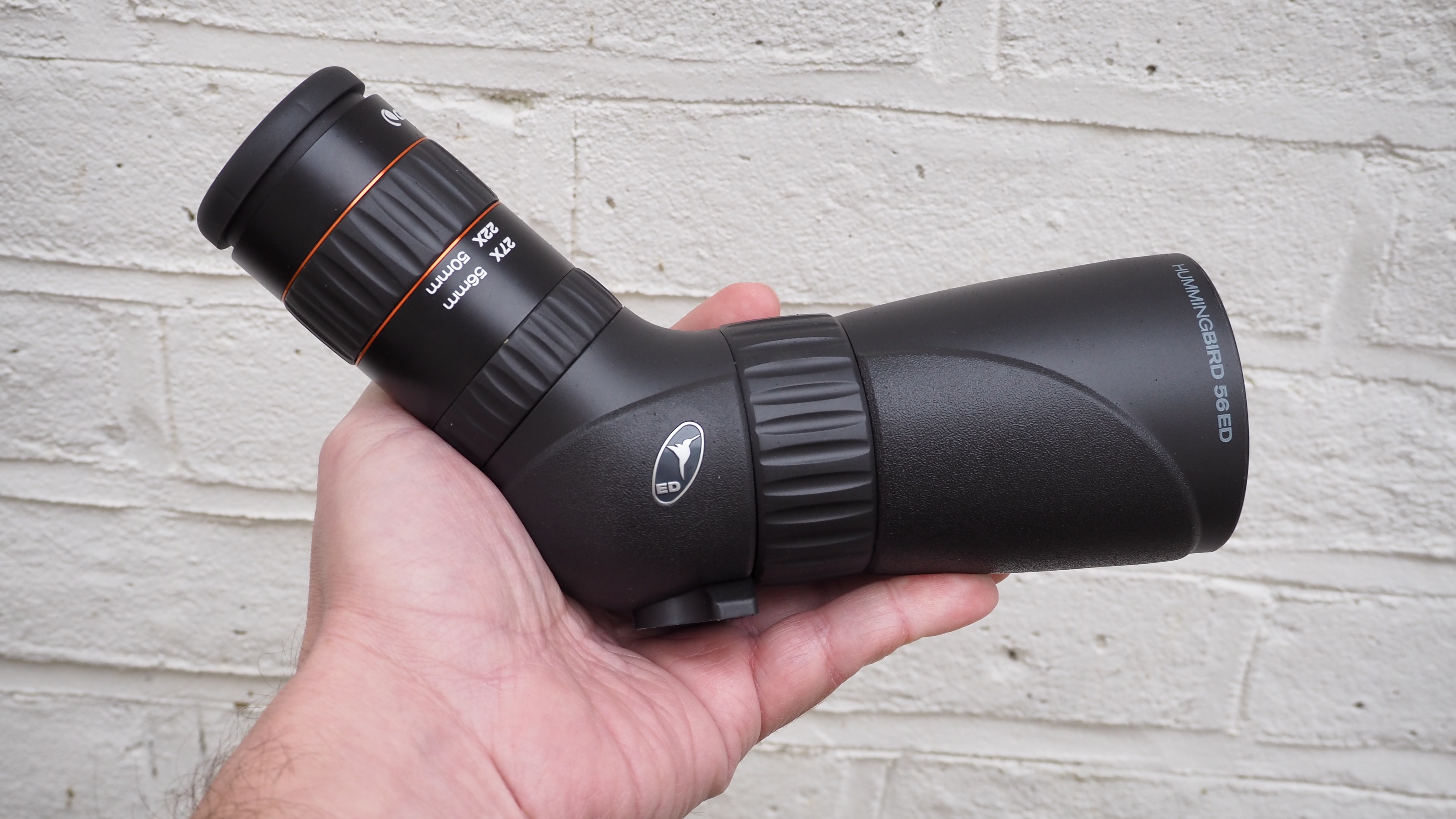
Specifications
Reasons to buy
Reasons to avoid
✅ You want dual-purpose versatility: With a low 9x magnification, this scope can double as a monocular, giving you both a spotting scope and monocular in one compact device.
✅ You want digiscoping capability: The camera-adaptable design allows for digiscoping, making it a great choice for capturing nature photography through the scope.
❌ You want a handheld-friendly viewfinder: The angled viewfinder can be less ideal for handheld use, as it’s more comfortable for stationary viewing than quick handheld spotting.
❌ You want higher magnification for distant observation: While the 9-27x zoom is great for close to mid-range viewing, it may lack the reach of larger scopes if you're primarily observing distant wildlife or landscapes.
Like the Hummingbird it takes its name from, the Celestron Hummingbird 9-27x56 ED spotting scope is small and mobile, with a very manageable weight of 590g. That means it’s also ideally suited to taking on your travels. It will fit into a roomy jacket pocket, a rucksack, or a shoulder bag, and can be stashed in carry-on luggage.
At its lowest 9x magnification level, it can even substitute for a monocular, giving you, in effect, two products in one, though the angled viewfinder may not be ideal for handheld spotting.
This device is waterproof and nitrogen filled to prevent fogging, and is a tripod, monopod, and window-mount adaptable, giving it an extra degree of versatility. In summary, if you’re looking for a more portable alternative to a full-sized spotting scope, this ‘bird is hard to beat. What’s more, it’s also camera-adaptable for those into digiscoping.
Best budget spotting scope
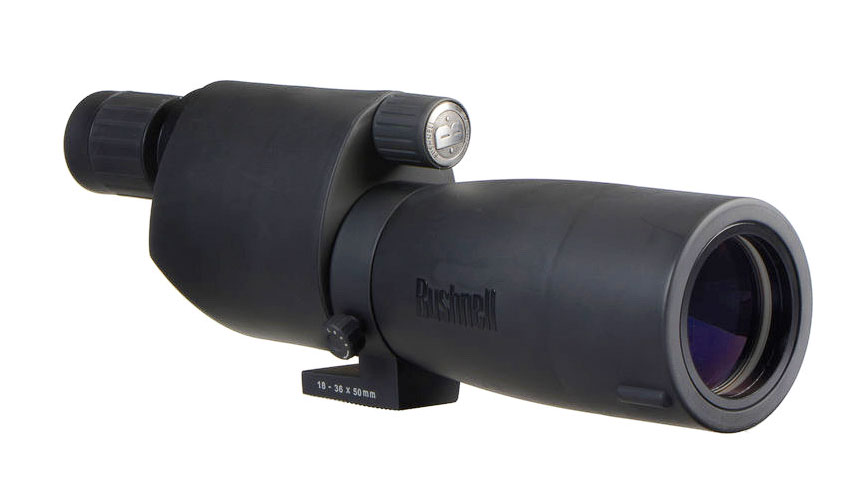
6. Bushnell Sentry 18-36x50
Specifications
Reasons to buy
Reasons to avoid
✅ You want an affordable option: The Bushnell Sentry 18-36x50 offers solid features at a budget-friendly price, making it an excellent choice for those seeking a quality spotting scope without a high cost.
✅ You want waterproof durability: With O-ring sealed optics, this scope is designed to keep the internal components dry even if submerged, providing peace of mind in wet or unpredictable environments.
❌ You want a higher magnification range: The 18-36x zoom is limited compared to some other scopes, so this model may be less ideal if you need powerful magnification for long-distance observation.
❌ You want an angled eyepiece for stationary viewing: This scope comes with a straight eyepiece, which might be less comfortable for viewing objects at an angle or for long periods when mounted on a tripod.
This sleek-looking spotting scope solution comes with a straight eyepiece and won’t break the bank. Despite the budget price, the Bushnell Sentry 18-36x50 is also impressively waterproof, with proper O-ring sealed optics so the internal workings stay fully dry, even when the Bushnell is submerged in water.
In terms of optical performance, multi-coatings help ensure reflections are avoided and all ‘air to glass’ surfaces deliver bright, high-contrast images. The Porro prism system also features twist-up eyecups and a comfortable 16mm eye relief. Weighing 877g despite the moisture-sealed build, this is still a relatively manageable and portable spotting scope.
Best spotting scope for DSLR photography
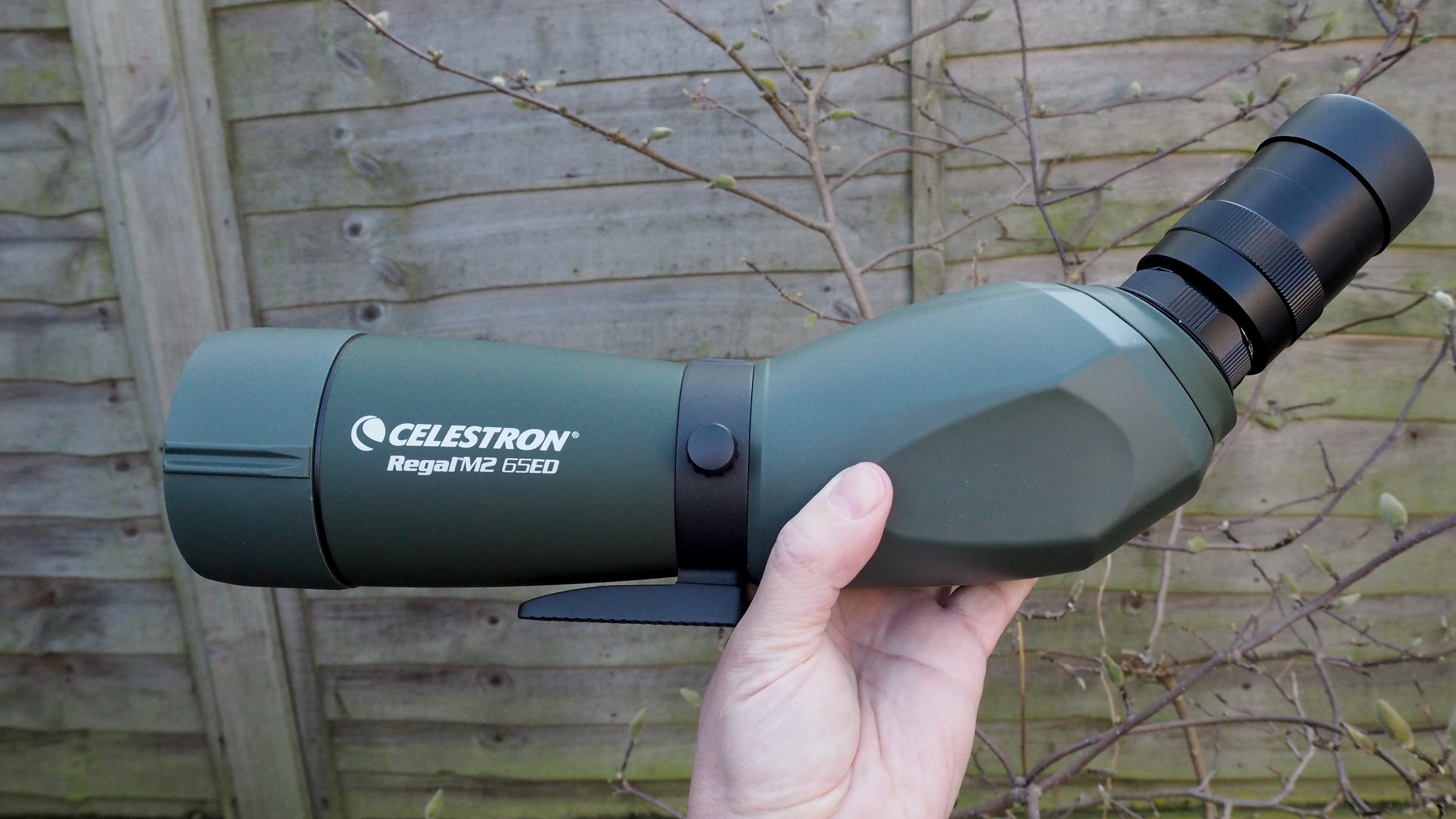
Specifications
Reasons to buy
Reasons to avoid
✅ You want fast, precise focusing: The upgraded dual-focus mechanism enables quicker, more precise adjustments, bringing subjects into focus up to two times faster—a valuable feature for capturing fast-moving wildlife or changing scenes.
✅ You want a premium, versatile scope: The Celestron Regal M2 65ED is well-suited for various applications, from daytime birdwatching to nighttime stargazing, making it a solid choice for versatile outdoor use.
❌ You want a fully included camera setup: Although the scope includes a T-adapter, you’ll need to purchase a compatible T-mount for your specific camera body separately, which may add to the overall cost.
❌ You want a more compact design for extended travel: Although lighter than the previous model, this premium scope may still be bulky for users who prioritize compactness and portability over advanced features.
The Celestron Regal M2 65ED is a premium spotting scope that is nevertheless fair value in its price range, offering suitability for everything from bird watching in the day to watching the heavens at night. Celestron claims that this second-generation unit has reduced the overall weight of the spotting scope by more than 14 percent, while still providing a rugged magnesium alloy body.
Further advantages include the fact that it has an upgraded dual-focus mechanism, which enables users to bring their subject into focus two times faster. You can factor in premium features such as Extra Low Dispersion (ED) glass found in the best camera lenses, and a camera can be attached to the Regal using an included T-adapter for use with DSLRs and mirrorless cameras (although you will still need to buy a compatible T-mount for your camera body).
Read our full Celestron Regal M2 65ED review.
How to choose spotting scopes
Straight or angled body?
When selecting a spotting scope, one key decision is choosing between a straight or angled body design. Straight scopes have an eyepiece aligned with the body, allowing for a direct line of sight to your subject—ideal for quick targeting and tracking. In contrast, angled scopes provide greater comfort, especially when seated or lying down, as they minimize neck strain. The best choice depends on your intended use and viewing conditions.
What magnification do I need?
A spotting scope’s magnification is determined by its eyepiece, which, in some models, is interchangeable. This allows you to swap eyepieces and adjust magnification based on your needs. Many scopes come with a zoom eyepiece, enabling you to zoom in for a closer look when something catches your eye. A wider magnification range enhances versatility, making the scope suitable for observing a variety of subjects.
However, higher magnification also presents challenges. As magnification increases, the image may appear darker, and maintaining a steady view becomes more difficult. This often requires a sturdier, heavier tripod to ensure stability and clarity. Striking the right balance between magnification and usability is essential for getting the best performance from your spotting scope.
What size objective lens do I need?
The main body of the spotting scope determines image brightness. A larger objective lens gathers more light, producing a clearer, brighter image—especially in low-light conditions. However, this also increases the scope’s size, weight, and cost.
For a portable, all-purpose option, a lens diameter between 50-65mm offers a good balance of brightness and mobility. For maximum brightness, scopes with 100mm or larger lenses excel, making them ideal for stargazing or observing distant wildlife at high magnifications.
How we test spotting scopes
We test spotting scopes within the field on moving subjects and landmarks for our buying guides and look for a scope that combines magnification, good construction, and image clarity, which can be used and withstand a day's bird watching or wildlife spotting. Budget is also an indicator and within this guide, you will find spotting scopes to suit everyone's budget.
Read more:
The best binoculars
10 best monoculars
Best night vision goggles and binoculars
The best lenses for bird photography
The best telescopes for astrophotography
Get the Digital Camera World Newsletter
The best camera deals, reviews, product advice, and unmissable photography news, direct to your inbox!

For nearly two decades Sebastian's work has been published internationally. Originally specializing in Equestrianism, his visuals have been used by the leading names in the equestrian industry such as The Fédération Equestre Internationale (FEI), The Jockey Club, Horse & Hound, and many more for various advertising campaigns, books, and pre/post-event highlights.
He is a Fellow of the Royal Society of Arts, holds a Foundation Degree in Equitation Science, and holds a Master of Arts in Publishing. He is a member of Nikon NPS and has been a Nikon user since his film days using a Nikon F5. He saw the digital transition with Nikon's D series cameras and is still, to this day, the youngest member to be elected into BEWA, the British Equestrian Writers' Association.
He is familiar with and shows great interest in 35mm, medium, and large-format photography, using products by Leica, Phase One, Hasselblad, Alpa, and Sinar. Sebastian has also used many cinema cameras from Sony, RED, ARRI, and everything in between. He now spends his spare time using his trusted Leica M-E or Leica M2, shooting Street/Documentary photography as he sees it, usually in Black and White.
